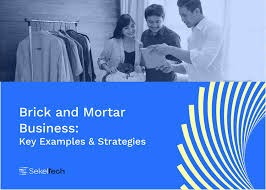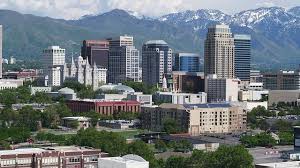In a world dominated by online shopping and virtual services, it’s easy to assume that physical stores are becoming obsolete. However, the brick and mortar business remains a powerful force in the economy. With unique advantages like in-person experiences and community connections, these businesses continue to attract loyal customers. Let’s take a closer look at why brick and mortar enterprises still matter and how they’re adapting to modern trends.
What Is a brick and mortar business?
A brick and mortar business refers to a company that operates from a physical location, such as a store, office, or warehouse, where customers can interact directly with products or services. Unlike online-only businesses, these establishments offer face-to-face customer service, tangible shopping experiences, and immediate product access.
While digital commerce has reshaped consumer behavior, physical businesses provide a sense of trust, authenticity, and engagement that online platforms often struggle to replicate. Many shoppers still value seeing and testing products in person before making a purchase.
Advantages of Running a brick and mortar business
Despite the convenience of online shopping, brick and mortar businesses offer distinct advantages that keep them relevant. One major benefit is the ability to create personal relationships with customers. Friendly service, knowledgeable staff, and personalized attention lead to customer loyalty and word-of-mouth marketing.
Additionally, physical locations can create immersive brand experiences that websites simply can’t match. Think about how popular stores design their interiors, host in-store events, or offer exclusive local promotions. These efforts build strong emotional connections with consumers.
Another advantage is impulse buying. Shoppers are more likely to make spontaneous purchases when they physically browse products. If you’re considering opening a storefront, reading a comprehensive guide to starting a retail business can be incredibly helpful.
How Brick and Mortar Stores Are Evolving
Today’s successful brick and mortar business isn’t operating exactly like it did decades ago. To stay competitive, many businesses are embracing technology and blending digital tools with physical spaces. Examples include offering in-store pickup for online orders, using apps for promotions, and integrating loyalty programs with online accounts.
Some businesses are even adopting hybrid models known as “click-and-mortar,” where customers can shop both in-store and online seamlessly. Staying adaptable is key, especially as customer expectations continue to evolve. For insights into growing your customer base through both physical and online channels, check out strategies for omnichannel marketing.
Moreover, a growing trend in retail is focusing on local sourcing and community engagement. Shoppers increasingly want to support businesses that give back to their communities and champion sustainability.
Conclusion
The brick and mortar business model remains alive and thriving, offering unique advantages that online-only businesses cannot fully replicate. With the right mix of personal service, memorable in-store experiences, and smart integration of technology, traditional businesses can continue to grow and prosper. Whether you’re a new entrepreneur or an established retailer, understanding and embracing the evolving nature of physical stores will position you for long-term success.



